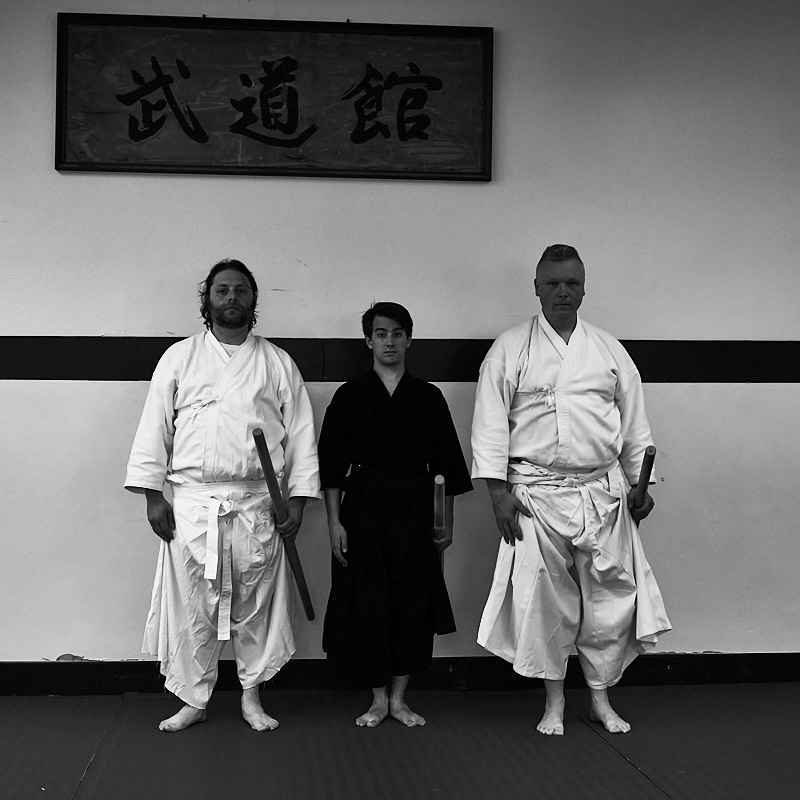I first studied classical Japanese swordsmanship in Port Washington, NY under Kato Kazuo of the NY Yagyukai. He led a practice of Yagyu Shinkage-ryū heihō there in the mid 1990s on Saturday mornings I was able to attend until I discovered I was quite allergic to the red laquer in the fukuro shinai. I regret I did not continue this practice at the time.
After moving from NYC to DC, I began studying with a Katori Shintō-ryū study group hosted at Capital Aikikai. I reached the level of mokuroku shortly after our mentor was deployed to Afghanistan. I continued to practice at Captial but over time I felt as though I needed more regular instruction than working with senior instructors once or twice a year. An aiki-jujutsu colleague I had known from Pittsburgh had begun training in Yagyu at the Hōbyōkan and over time I visited their practice and was accepted as a student in the Jikishinkage-ryū kenjutsu they maintained. I trained there until I moved to Seattle in 2016.
From 2014 to 2022, I worked with my Hōbyōkan sponsor in DC and when we both were in the Pacific Northwest — I shared with him my knowledge of Jikishinkage-ryū kata and he in turn worked with me on the honden curriculum of Yagyu Shinkage-ryū.
I eventually decided that trying to practice multiple koryu with obligations to more than one dojo was too challenging. While I continue to enjoy practicing a subset of the Shintō-ryū kata I know as a personal misogi (purification) and form of shugyō (asceticism), I do so alone. My movements have been affected by my practice of Shinkage-ryū to the point where I no longer can I say I am practicing the art exactly as I learned it.
In 2018 I received a Hōbyōkan chuden menjo associated to my practice of Jikishinkage-ryū. I then worked with a small group in Seattle on aspects of Jikishinkage-ryū I learned at the Hōbyōkan in order to maintain my practice. I attempted to do so in a manner I felt was compatible with my broader study of traditional internal martial arts.
Over time I began calling my practice Gassan Kenpō.
The Hōbyōkan is an independent and unofficial line of Jikishinkage-ryū and my own practice at the Gassankan is even moreso, given its multiple influences. I attempt to cultivate mindfulness through austere training called shugyō that develops the body, mind, and spirit but recognize my Japanese sword practice is conducted outside of a formal lineage.
Two of the people I have mentored, Jake Harlin and Nicky Sayah Sina, have progressed to the point where they have a firm grasp of the fundamentals of Jikishinkage-ryū as I learned it at the Hōbyōkan. They now lead the study group in Seattle I started.
Those interested in training in some of the kata of classical Jikishinkage-ryū kenjutsu in Seattle can
reach Nicky and Jake at Jiki at Lonin.
Their weekly practice concentrates on unpō (
